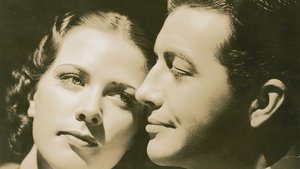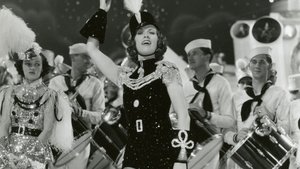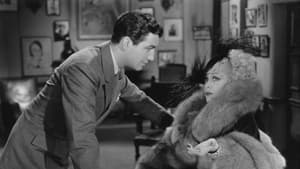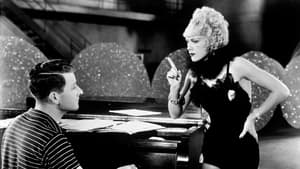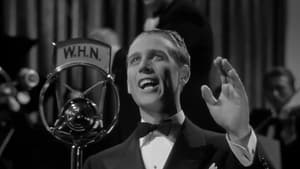Contact: info@alwanfilm.com
Video Sources 0 Views
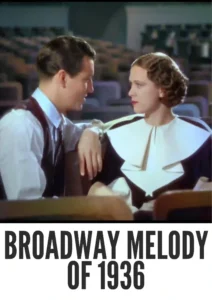
Synopsis
Broadway Melody of 1936 Colorized Review: A Glitz-Filled Musical Spectacular Revisited

Introduction
In the landscape of 1930s cinema, Broadway Melody of 1936 holds a special place as a dazzling exemplar of the musical genre. Directed by Roy Del Ruth, this film is the second entry in the Broadway Melody series, following the successful Broadway Melody (1929). Renowned for its vibrant Technicolor sequences and toe-tapping musical numbers, Broadway Melody of 1936 stands as a testament to the exuberance and artistry of the era’s musical films. This review will explore how the film captures the essence of 1930s Broadway, assess the impact of its Technicolor presentation, and examine its significance in the evolution of the musical genre.
Check The Full Colorized Movies List
Check Our Colorized Movies Trailer Channel
Understanding Broadway Melody of 1936 Colorized: Director, Cast, and Genre
Director’s Vision
Roy Del Ruth, a prolific director known for his contributions to both musicals and comedies, brought a unique vision to Broadway Melody of 1936. His direction aimed to capture the glitz and glamour of Broadway while integrating a compelling narrative with spectacular musical numbers. Del Ruth’s approach was to blend the vibrancy of stage performances with the dynamic capabilities of film, resulting in a production that showcased the energy and spectacle of 1930s Broadway.
The Iconic Performance of Actors
Broadway Melody of 1936 features a star-studded cast, led by the talented Jack Benny and the charming Eleanor Powell. Jack Benny, known for his comedic timing and charismatic screen presence, plays the role of the charming and opportunistic Broadway producer. Eleanor Powell, a celebrated dancer of the time, shines as the film’s lead performer, bringing grace and energy to her role. Her dance numbers, in particular, are a highlight of the film, showcasing her extraordinary talent and captivating the audience.
Supporting performances by Robert Taylor and Una Merkel further enhance the film’s appeal. Taylor’s role as a suave and talented performer complements Powell’s character, while Merkel’s comedic presence adds a delightful touch of humor to the story.
Exploring the Genre
Broadway Melody of 1936 falls firmly within the musical genre, a category characterized by its integration of song, dance, and theatrical elements. Musicals of this era were known for their elaborate production numbers, vibrant costumes, and larger-than-life performances. Broadway Melody of 1936 embraces these conventions, offering audiences a glimpse into the glamorous world of Broadway through its engaging story and impressive musical sequences. The film’s genre is defined by its emphasis on spectacle and entertainment, which are central to its appeal.
Exploring the World of Broadway Melody of 1936 Colorized: Plot and Characters
Detailed Synopsis
The plot of Broadway Melody of 1936 centers around the ambitious and glamorous world of Broadway theater. The story follows a group of performers and producers as they navigate the challenges of putting on a major stage production. Jack Benny’s character, a savvy producer, is at the heart of the action, working tirelessly to ensure the success of his latest show.
Eleanor Powell’s character, a talented dancer, plays a crucial role in the production, bringing star power and excitement to the stage. The narrative unfolds with a series of musical numbers and dramatic moments, showcasing the highs and lows of the theatrical world. Key scenes include dazzling dance routines, backstage dramas, and the ultimate triumph of the production.
Supporting characters, including Robert Taylor and Una Merkel, contribute to the film’s storyline with their own subplots and interactions. Their performances add depth to the film, enhancing the overall narrative and providing additional layers of entertainment.
The Art of Technicolor
Understanding the Process
Technicolor, the groundbreaking color process used in Broadway Melody of 1936, was a significant advancement in filmmaking. Developed in the early 20th century, Technicolor involved capturing and projecting color images using multiple film strips. This process allowed filmmakers to create vibrant and realistic colors, enhancing the visual experience of films.
The application of Technicolor in Broadway Melody of 1936 brought a new level of visual splendor to the film. The rich colors of the costumes, sets, and musical numbers were rendered with striking clarity, contributing to the film’s overall impact and appeal.
Development Over Time
Technicolor revolutionized the film industry by offering a more dynamic and immersive viewing experience. Initially used in a limited capacity, Technicolor became more prevalent in the 1930s and 1940s, with films like Broadway Melody of 1936 showcasing its potential. Over time, advancements in color technology continued to enhance the quality and realism of color films, setting the stage for future innovations in the industry.
Early Colored Films: A Brief History
Emergence of Early Colored Techniques
The journey towards color films began with various experimental techniques in the early 20th century. Early methods, such as hand-tinting and tinting, involved adding color to specific parts of a film or adjusting the color balance of entire scenes. These techniques provided a limited color experience but represented significant advancements in filmmaking.
The introduction of Technicolor marked a major milestone in the history of color cinema. The process, which used multiple film strips to capture and project colors, offered a more comprehensive and realistic color experience. The success of Technicolor films, including Broadway Melody of 1936, demonstrated the potential of color in enhancing the visual appeal of movies.
Broadway Melody of 1936 and Its Technicolor Spectacle
The Decision to Use Technicolor
The decision to utilize Technicolor for Broadway Melody of 1936 was a strategic choice aimed at maximizing the film’s visual impact. Technicolor’s ability to render vibrant colors was particularly well-suited to the film’s musical numbers and elaborate stage designs. The use of color added an extra layer of excitement and glamour to the production, aligning perfectly with the film’s theatrical theme.
Impact on the Visual Narrative
The Technicolor presentation of Broadway Melody of 1936 enhances the film’s visual narrative by bringing the Broadway world to life with vivid colors. The rich hues of the costumes, sets, and lighting contribute to the film’s overall spectacle, making it a feast for the eyes. The colorization not only adds depth to the visual experience but also highlights the artistry and craftsmanship of the film’s production design.
The Debate Over Film Colorization
Controversy Surrounding Colorization
The colorization of black-and-white films has sparked debate among critics and film enthusiasts. Some argue that colorization can compromise the original artistic vision of a film, altering its historical and aesthetic context. Critics may also point out that colorization can introduce inaccuracies or anachronisms that detract from the film’s authenticity.
Proponents of colorization, however, argue that it can bring new life to classic films and make them more accessible to modern audiences. By enhancing the visual appeal, colorization can attract new viewers and offer a fresh perspective on beloved films.
Examining Broadway Melody of 1936 as a Technicolor Film
Enhancement or Distraction?
The Technicolor presentation of Broadway Melody of 1936 offers a striking enhancement to the film’s viewing experience. The vibrant colors bring out the details of the film’s costumes, sets, and performances, creating a visually captivating experience. For audiences who appreciate the artistry of early Technicolor films, the colorization adds a layer of excitement and richness to the film.
However, some viewers may find that the vivid colors distract from the film’s original charm. The Technicolor process, while impressive, can sometimes overshadow the narrative and performances, leading to a different viewing experience than the original black-and-white version.
Influence and Legacy: Broadway Melody of 1936 Colorized’s Impact on Cinema
The Musical Film Trend
Broadway Melody of 1936 played a significant role in shaping the musical genre and influencing subsequent films. The film’s success demonstrated the appeal of musical productions and set a standard for future musicals. Its integration of Technicolor and elaborate stage sequences contributed to the evolution of the genre, paving the way for future musical films.
The impact of Broadway Melody of 1936 is evident in the work of later filmmakers who embraced and expanded upon the musical genre. The film’s emphasis on spectacle and entertainment influenced a generation of filmmakers and performers, contributing to the continued popularity of musicals in cinema.
Director’s Cinematic Legacy: Broadway Melody of 1936 Colorized
Roy Del Ruth’s Influence
Roy Del Ruth’s directorial career extended beyond Broadway Melody of 1936, encompassing a diverse range of films and genres. Known for his work in both musicals and comedies, Del Ruth made significant contributions to Hollywood’s Golden Age. His ability to blend entertainment with artistic innovation is evident in his films, which continue to be celebrated for their creativity and impact.
Del Ruth’s influence on filmmaking is reflected in his successful transition from musicals to other genres, showcasing his versatility and skill as a director. His work remains a testament to the artistic achievements of early Hollywood.
Themes Explored in Broadway Melody of 1936 Colorized
Glamour, Ambition, and Entertainment
Broadway Melody of 1936 explores themes of glamour, ambition, and entertainment within the context of the Broadway theater world. The film’s narrative focuses on the pursuit of success in the competitive world of theater, highlighting the challenges and triumphs experienced by its characters.
The themes of glamour and ambition are central to the film, driving the story and shaping the characters’ motivations. The film’s emphasis on entertainment and spectacle reflects the broader trends of 1930s cinema, showcasing the allure and excitement of Broadway.
Reception and Controversy Surrounding Broadway Melody of 1936 Colorized
Initial Reviews and Audience Reactions
Upon its release, Broadway Melody of 1936 received positive reviews for its lively musical numbers and impressive Technicolor presentation. Critics praised the film’s engaging story, captivating performances, and the dazzling choreography. The film’s ability to capture the essence of Broadway and deliver a high-energy performance contributed to its success.
The Technicolor process also garnered attention, with audiences and critics alike marveling at the vibrant colors and visual impact. The film’s reception highlighted its significance as a key example of early Technicolor filmmaking and its contribution to the musical genre.
Where to Watch Broadway Melody of 1936 Colorized Online
For those interested in experiencing Broadway Melody of 1936, several streaming platforms offer access to the film. Popular services such as Amazon Prime Video and Turner Classic Movies provide options for viewing the film online. Additionally, DVD and Blu-ray versions, including Technicolor editions, are available for purchase.
FAQs About Broadway Melody of 1936 Colorized
Q: What is the significance of Technicolor in Broadway Melody of 1936?
A: Technicolor adds a vibrant and dynamic visual experience to Broadway Melody of 1936, enhancing the film’s musical numbers and stage sequences. The use of Technicolor highlights the artistry and spectacle of the film, making it a notable example of early color filmmaking.
Q: Who directed Broadway Melody of 1936?
A: Broadway Melody of 1936 was directed by Roy Del Ruth, a filmmaker known for his work in both musicals and comedies during Hollywood’s Golden Age.
Q: What themes are explored in Broadway Melody of 1936?
A: The film explores themes of glamour, ambition, and entertainment, focusing on the world of Broadway theater and the pursuit of success in the competitive industry.
Q: How has Broadway Melody of 1936 influenced the musical genre?
A: Broadway Melody of 1936 played a significant role in shaping the musical genre, demonstrating the appeal of elaborate stage productions and Technicolor filmmaking. Its success influenced subsequent musicals and contributed to the continued popularity of the genre.
Conclusion
Broadway Melody of 1936 remains a quintessential example of 1930s musical cinema, celebrated for its Technicolor brilliance and captivating performances. Roy Del Ruth’s direction, combined with the stellar performances of Jack Benny and Eleanor Powell, creates a film that is both entertaining and visually stunning. The use of Technicolor adds a layer of excitement and glamour to the film, enhancing its overall impact and showcasing the artistry of early color filmmaking. Whether revisited in its original form or through the lens of modern technology, Broadway Melody of 1936 continues to captivate audiences and stand as a testament to the enduring allure of Broadway and the musical genre.
